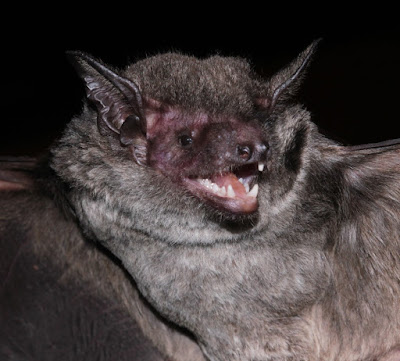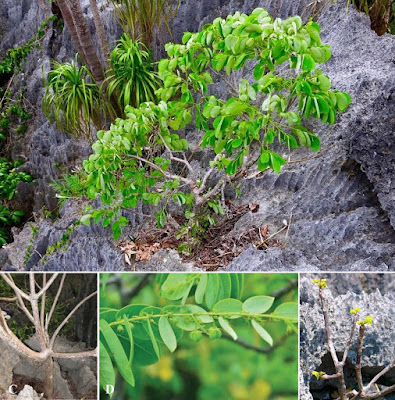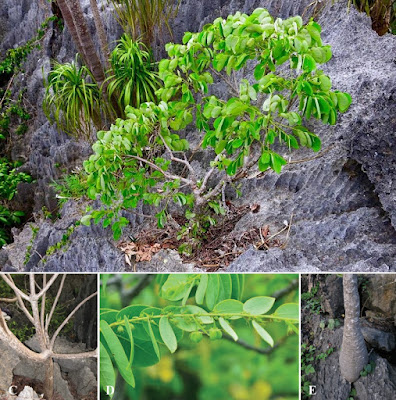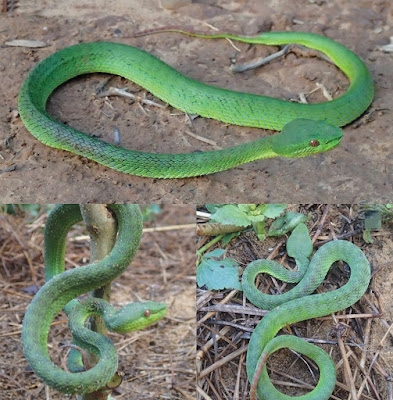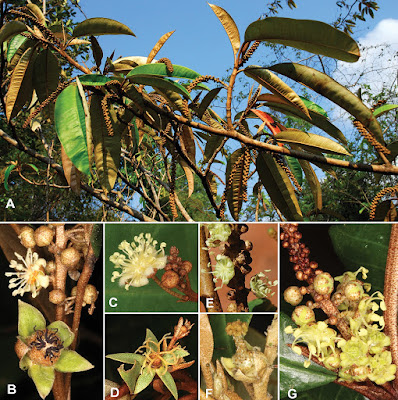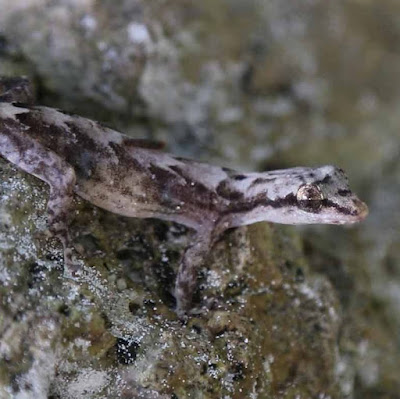[Most Recent Entries] [Calendar View]
Thursday, November 16th, 2017
| Time | Event | ||
| 1:21a | [Mammalogy • 2017] Ia io peninsulata • The First Record of Ia io Thomas, 1902 (Chiroptera: Vespertilionidae) from the Sundaic Subregion, with A Description of A New Subspecies from peninsular Thailand
Abstract The Great evening bat Ia io Thomas, 1902, previously considered as an endemic to the Indochinese subregion, is reported from the Sundaic subregion for the first time based on specimens collected from three localities in Surat Thani Province and Phang Nga Province, peninsular Thailand. It is described herein as a new subspecies based on its substantially larger body and skull size. The mitochondrial COI and cytochrome b genes reveal that the new subspecies has a genetic distance of 1.89% and 1.65%, respectively, from the nominate subspecies. Echolocation calls comprise four harmonics, with the maximum energy in the first harmonic (fmaxe) of 23.6–27.4 kHz. Notes on the population size as well as roosting and foraging behaviour are also provided. Keywords: Mammalia, new subspecies, peninsular Thailand, Southeast Asia, taxonomy, zoogeography Pipat Soisook, Kriangsak Sribuarod, Sunate Karapan, Mongkol Safoowong, Sawwalak. Billasoy, Vu Dinh Thong, Yang Chang, Lixin Gong, Aiqing Lin , Anna Sztencel-Jabłonka, Wiesław Bogdanowicz and Paul J. J. Bates. 2017. The First Record of Ia io Thomas, 1902 (Mammalia: Chiroptera: Vespertilionidae) from the Sundaic Subregion, with A Description of A New Subspecies from peninsular Thailand. Zootaxa. 4344(3); 573–588. DOI: 10.11646/zootaxa.4344.3.8 | ||
| 1:34a | [Botany • 2017] Phyllanthus kaweesakii • A New Species (Phyllanthaceae) from Thailand
ABSTRACT Phyllanthus kaweesakii Pornp., Chantar. & J.Parn. sp. nov. is newly described from the limestone mountain ridges in the northeast of Thailand. Comparison of morphology, anatomy, pollen morphology, and DNA sequences of this species with the most similar existing species P. mirabilis Müll.Arg. was undertaken. The results indicated that the two taxa are different in morphology, especially habit, stem base, and inflorescence, but that their pollen morphology and anatomy are similar. The molecular phylogenetic analysis, based on sequences of the plastid matK and nuclear ribosomal ITS regions, supported separation of the two taxa. This new species is described and illustrated, and its conservation status is discussed. Keywords: Euphorbiaceae, Phyllanthaceae, Phyllanthodendron, Phyllanthus Phyllanthus kaweesakii Pornp., Chantar. & J.Parn. sp. nov. ETYMOLOGY: The name of this species honours the Thai biologist, Kaweesak Keeratikiat, who first discovered the plants. VERNACULAR: Ma Yom Pha, มะยมผา. DISTRIBUTION: Currently known only from the type location; North-eastern THAILAND. ECOLOGY: On open limestone ridges, ca. 440 m a.s.l. Flowering period June to September, fruiting period August to September. Pimwadee Pornpongrungrueng, John A.N. Parnell, Trevor R. Hodkinson and Pranom Chantaranothai. 2017. Phyllanthus kaweesakii (Phyllanthaceae), A New Species from Thailand. Botany. 95(6): 567-577: DOI: 10.1139/cjb-2016-0298 มะยมหินชนิดใหม่ของโลก Phyllanthus kaweesakii Pornp., Chantar. & J.Parn. (Phyllanthaceae), a new species from Thailand ตั้งชื่อชนิดเป็นเกียรติให้แก่ผู้ค้นพบและ ลักษณะ เป็นพืชอวบน้ำ Succulent มีโขดลำต้นอวบอ้วนสะสมอาหาร ทนแล้งได้มาก มีลักษณะแตกต่างกับมะยมหินชนิดดั้งเดิม Phyllanthus mirabilis Müll.Arg. คือ จะกิ่งก้านเล็กและแตกกิ่งก้านเยอะกว่ามาก ใบมีขนาดเล็ก ทรงกลมมน มีคู่ใบน้อย 6-10 คู่ใบ ใบมีแว็กซ์สีเขียวอมฟ้าเล็กน้อย ออกดอกช่อสั้น ติดเมล็ดปลายยอด Photos by Disapol Rattasi | ||
| 2:03a | [Herpetology • 2017] Troublesome Trimes: Potential Cryptic Speciation of the Trimeresurus (Popeia) popeiorum complex (Serpentes: Crotalidae) around the Isthmus of Kra (Myanmar and Thailand)
Abstract The taxonomic identity of the Trimeresurus (Popeia) popeiorum complex from the Isthmus of Kra and to the north was investigated. Several studies over the last decade have produced several specimens and associated mtDNA sequence data for a variety of individuals of the T. popeiorum and “T. sabahi” complexes. Here, we combine four mitochondrial genes (12S, 16S, ND4, and CytB) from all available specimens in GenBank with the addition of five new specimens collected from the mainland, Tanintharyi Region of Myanmar. Maximum Likelihood and Bayesian analyses identified that T. popeiorum sensu lato is paraphyletic with two geographically distinct clades: a northern clade representing populations from northern Myanmar, Laos and northern Thailand and a southern clade representing samples from the Tanintharyi Region and adjacent west Thailand. While the two clades have considerable genetic distance, they appear to be morphologically identical, leading to the hypothesis that the southern clade represents a cryptic, undescribed species. Because they appear to be cryptic species and the limitation of only five specimens from the southern lineage, this does not permit us to formally describe the new species. In accordance to past molecular studies, we uncovered paraphyly and lack of genetic support for the validity of taxa within the T. sabahi complex. However, we suggest recognizing these populations as subspecies within T. sabahi. Keywords: Reptilia, Cryptic speciation, Myanmar, Southeast Asia, Subspecies, Tanintharyi Region, Thailand, Trimeresurus Daniel G. Mulcahy, Justin L. Lee, Aryeh H. Miller and George R. Zug. 2017. Troublesome Trimes: Potential Cryptic Speciation of the Trimeresurus (Popeia) popeiorum complex (Serpentes: Crotalidae) around the Isthmus of Kra (Myanmar and Thailand). Zootaxa. 4347(2); 301–315. DOI: 10.11646/zootaxa.4347.2.6 | ||
| 8:12a | [Botany • 2017] A Nomenclator of Croton (Euphorbiaceae) in Madagascar, the Comoros Archipelago, and the Mascarene Islands Abstract All published names of Croton from Madagascar, the Comoros, and the Mascarenes are treated here. We indicate which names are currently accepted (123 native species and 1 introduced), which ones we consider to be heterotypic synonyms (188), which ones are doubtful (25), and which ones should be excluded (5). We newly designate lectotypes for 108 names, and epitypes for C. anisatus Baill., C. nobilis Baill., and C. submetallicus Baill. A total of 133 names are newly treated as synonyms. One new combination is made, Croton basaltorum (Leandri) P.E.Berry for C. antanosiensis var. basaltorum Leandri, and one new name is proposed, Croton toliarensis B.W.vanEe & Kainul. for C. tranomarensis var. rosmarinifolius Radcl.-Sm. Keywords: Euphorbiaceae, Croton, Madagascar, Comoros, Mascarenes, nomenclator, synonymy Paul E. Berry, Kent Kainulainen and Benjamin W. van Ee. 2017. A Nomenclator of Croton (Euphorbiaceae) in Madagascar, the Comoros Archipelago, and the Mascarene Islands. PhytoKeys. 90; 1-87. DOI: 10.3897/phytokeys.90.20586 | ||
| 4:27p | [Herpetology • 2017] Lepidodactylus pantai • A New Species of Lepidodactylus (Squamata: Gekkonidae) from the Kei Islands, Maluku, Indonesia
Abstract Lepidodactylus pantai is a new species of gecko from the Kei Islands, Maluku, Indonesia that is closely associated with intertidal habitats. This species does not fit cleanly into any of the three species groups described for the genus because it possesses the unique combination of both divided terminal scansors on all toes and a nearly completely cylindrical tail without fringes or evidence of dorsoventral compression. A phylogenetic analysis including this species demonstrates that it is the sister taxon of a population from Palau, and that this clade is sister to the clade containing Group III species for which we have molecular data. Keywords: Reptilia, Wallacea, Phylogenetics, Gecko, Luperosaurus, Pseudogekko, Moluccas, intertidal, pantai Alexander L. Stubbs, Benjamin R. Karin, Umilaela Arifin, Djoko T. Iskandar, Evy Arida, Sean B. Reilly, Luke M. Block, Agus Kusnadi and Jimmy A. McGuire. 2017. A New Species of Lepidodactylus (Reptilia: Squamata: Gekkonidae) from the Kei Islands, Maluku, Indonesia. Zootaxa. 4350(1); 91–105. DOI: 10.11646/zootaxa.4350.1.5 |
| << Previous Day |
2017/11/16 [Calendar] |
Next Day >> |
